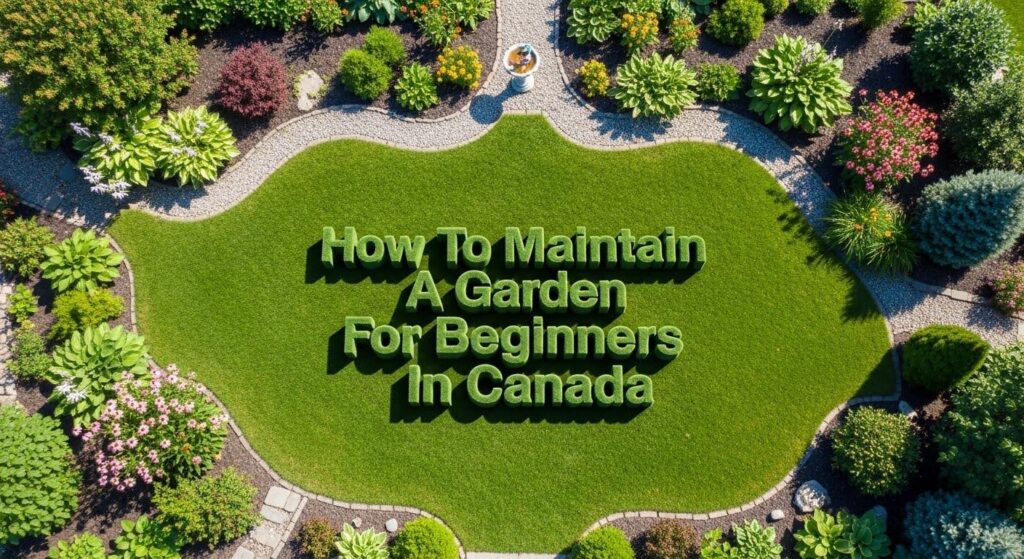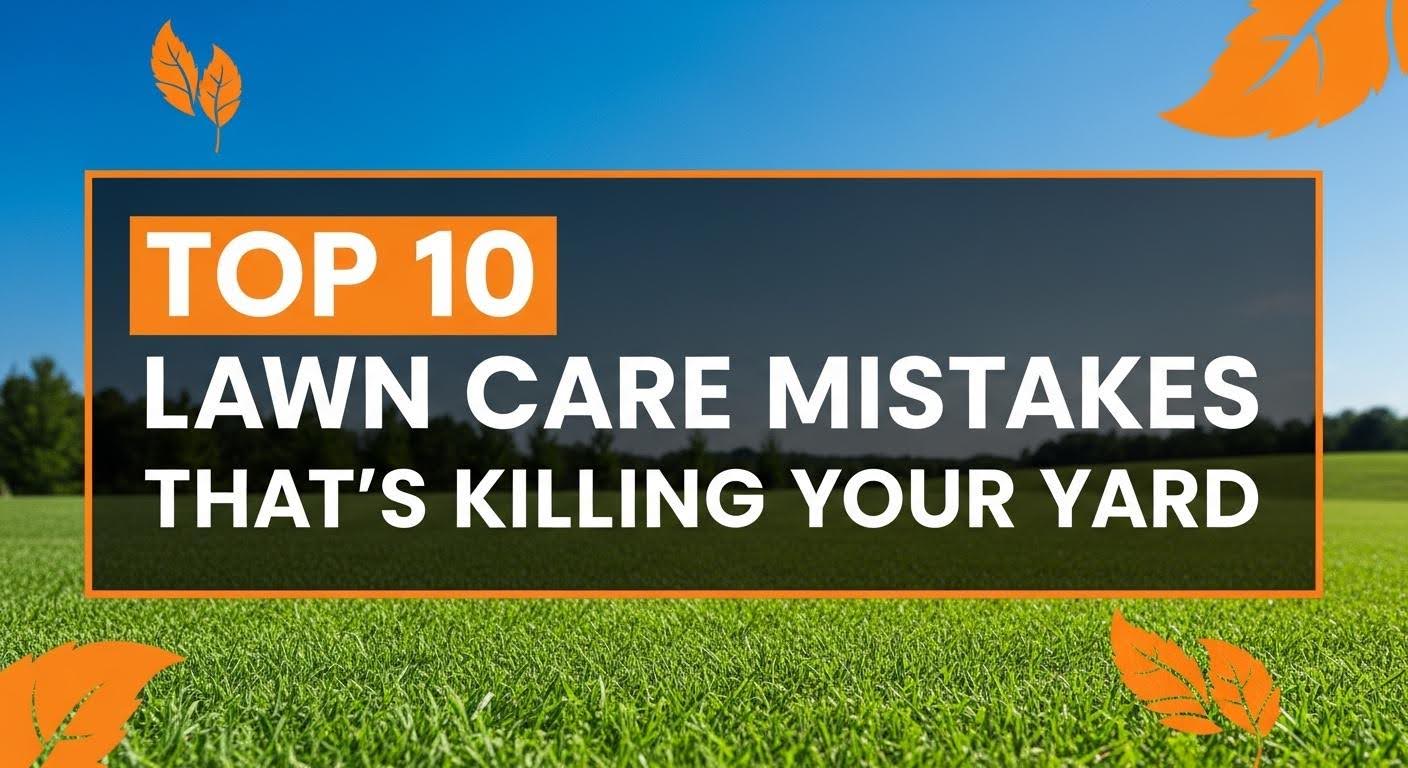Have you ever looked at your backyard and thought, “I wish this space felt alive again; somewhere peaceful, colorful, and easy to care for?”
Across Canada, more people (especially beginner gardeners and seniors) are discovering how a simple garden can do wonders for both body and mind.
Beyond its beauty, gardening helps boost mobility, strengthen balance, and improve air quality.
Studies even show that spending time outdoors can lower stress levels, while naturally increasing your home’s value and insurance appeal.
Still, with so many “quick guides” online, learning how to maintain a garden for beginners in Canada can feel confusing. One wrong step with a tool or an overlooked detail in soil care can cause frustration—or even an accident.
While watering and weeding are simple enough, a thriving garden often needs an expert touch.
That’s where Custodia Home Management Plans come in; combining your seasonal gardening, lawn, and yard care into one simple, affordable plan so you can enjoy your home, not just maintain it.
What Should Beginners Know Before Maintaining A Garden In Canada?

Before you dig that first hole or buy your first pack of seeds, it’s important to understand that every Canadian garden has its own rhythm.
Whether you live in Ontario’s mild southern zones or a cooler northern region, your success begins with knowing your space and working with nature—not against it.
Here’s what every beginner gardener in Canada should know:
- Know your Plant Hardiness Zone and Frost Dates
These tell you when it’s safe to plant and which flowers or vegetables can thrive in your region.
- Study Sunlight and Microclimates
Spend a day observing how sunlight moves across your yard. Areas that get six to eight hours of light are perfect for vegetables, while shaded corners suit ferns or hostas.
- Start Small and Grow with Confidence
Begin with a few raised beds, small containers, or simple herbs. This helps you learn and succeed without feeling overwhelmed.
- Understand Your Soil Type
Healthy soil is the heart of any garden. Check for drainage, texture, and moisture retention—it’s what separates thriving gardens from frustrating ones.
- Gather Basic Gardening Tools
You don’t need everything at once. A sturdy hand trowel, gloves, pruner, watering can, and rake are enough to start your gardening journey safely.
How Often And How Much Should You Water, Weed & Mulch A Garden In Canada?
The right watering, weeding, and mulching routine helps your plants thrive while saving you time and frustration.
Every garden has its own “heartbeat,” and learning to follow it is where beginner gardeners start turning into experts.
- Water deeply, not daily.
Aim for a slow, deep soak two to three times a week, ideally early morning. It trains roots to grow stronger and handle summer heat or dry spells better.
- Watch your soil.
If it feels dry two inches deep, it’s time to water. Overwatering can suffocate roots — one of the most common mistakes beginners make.
- Mulch smartly
Apply a 2–3 inch layer of organic mulch (like shredded bark or straw). It locks in moisture, controls weeds, and regulates soil temperature through Canada’s shifting seasons.
- Weed with purpose
Hand-pull after rain when the ground is soft, or use a hoe weekly to prevent them from spreading. Adding weed barriers helps reduce constant maintenance.
- Keep consistency
A few minutes each evening spent checking plants with family can turn garden care into a calming shared routine, building connection and teaching patience.
What Is the Ideal Mulch Thickness for Canadian Gardens?
For most Ontario gardens, 2 to 3 inches is perfect. Anything thinner won’t block weeds; anything thicker can trap excess moisture and attract pests.
[Read:Tips For Spreading Mulch]
Which Fertilizers Work Best For Canadian Gardens?
Healthy gardens in Ontario start with healthy soil and that begins by knowing what’s happening beneath the surface.
A simple soil test reveals your soil’s pH, nutrient levels, and organic matter.
Once you understand what your soil needs, every fertilizer or compost you add becomes more effective and less wasteful.
Practical and Proven Soil & Fertilizer Practices:
- Add compost twice a year
Mix in rich, dark compost in early spring before planting and again in fall after harvesting. It feeds beneficial microbes, improves soil structure, and restores lost nutrients.
- Choose organic fertilizers
Look for slow-release, balanced blends that provide nitrogen, phosphorus, and potassium naturally. They nourish roots over time without burning them or polluting groundwater.
- Use natural amendments
Aged manure, peat moss, or shredded leaves enrich poor soil, boost drainage, and lock in moisture — essential during Ontario’s dry summer spells.
- Rotate your crops and rest your soil
Rotating vegetables yearly and growing cover crops like rye or clover helps break pest cycles and prevent nutrient loss.
- Blend compost with mulch
Together, they retain moisture, regulate soil temperature, and protect roots from sudden frost or heat.
How Often Should You Add Compost Or Organic Matter?
For most Canadian gardens, twice a year is ideal; once in spring and once in fall.
Sandy soil may need smaller, more frequent compost layers to hold water better, while clay-rich soil benefits from lighter, less frequent applications to avoid compaction.
Conclusion

How can beginners grow confidently over time?
Start small, keep a garden journal, and improve one area each year. Track what works, adapt to your microclimate, and let experience shape your success naturally.
Whether you’re a senior rediscovering the joy of gardening or a busy homeowner trying to keep your space beautiful, expert help makes all the difference.
From lawn care and grass cutting to hedge trimming and yard cleanup, our professionals keep your home safe, green, and effortless.
Explore our Home Management Plans today to bundle your seasonal services into one affordable monthly plan designed to give you comfort, beauty, and peace of mind all year round.
Top Gardening Questions Beginners In Canada Ask
- What is the best month to start gardening in Canada?
Most regions in Canada start gardening in late April to May, once the frost has fully lifted and soil is workable.
- How often should beginners water their gardens in Ontario?
Water two to three times a week, deeply and early in the morning, to encourage strong root growth and prevent heat stress.
- What type of mulch is best for Canadian gardens?
Organic mulch such as bark, straw, or shredded leaves helps retain moisture, control weeds, and regulate soil temperature.
- How can I protect my garden from winter damage in Canada?
Prune perennials after frost, add a thick mulch layer, and cover sensitive plants with burlap or frost cloth for insulation.
- What’s the easiest fertilizer for beginner gardeners in Canada?
Choose organic, slow-release fertilizers or compost. They feed soil microbes, improve structure, and provide steady nutrients throughout the growing season.






